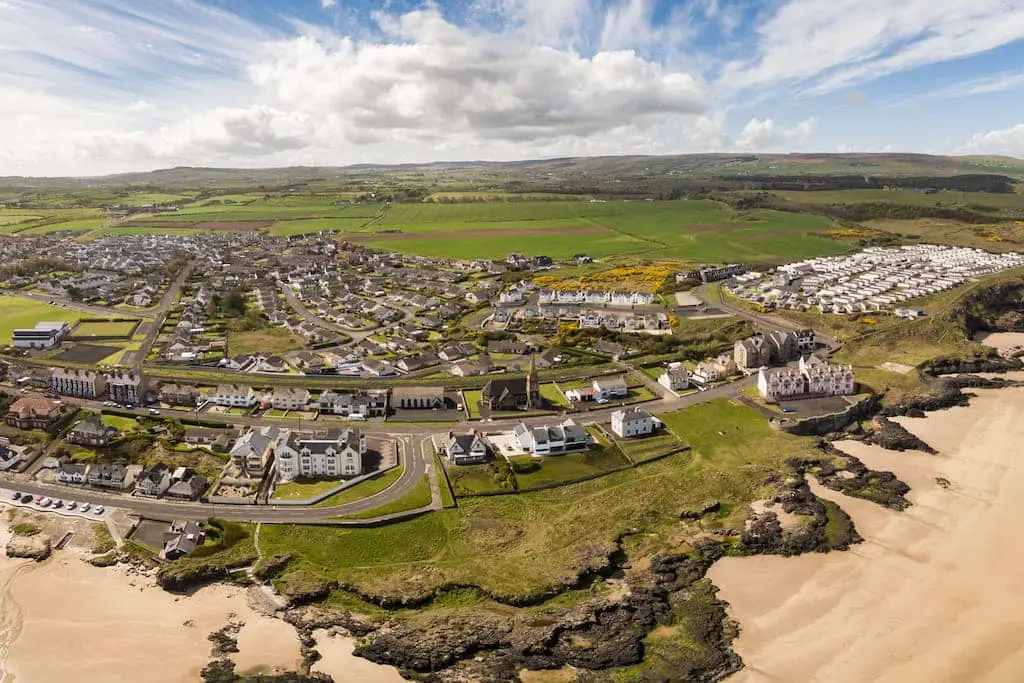Castlerock
Castlerock is a small seaside village spanning a few square miles, located 5 miles west of Coleraine and the Western Gateway of the Causeway Coast route on the north coast of Northern Ireland. One of the defining features of the village is the long stretch of Castlerock Beach, which draws visitors for its scenic beauty and recreational opportunities. It is a perfect blend of the present and the past. This town has less than fifteen hundred inhabitants but attracts many visitors in season due to a variety of places to visit being nearby, a naturally beautiful landscape, and great amenities.
Natural Beauty
Castlerock is an area of outstanding natural beauty and it starts at the lower River Bann estuary, 5 miles west of Coleraine in the direction of Londonderry and Limavady.
It is within the Benevenagh Area of Outstanding Natural Beauty (AONB) and is surrounded by nature in many forms.
There is a small selection of tea shops, local shops, pubs, and restaurants, as well as a Community Centre and Village Green in the heart of the town.
The exceptional Blue Flag beaches at Benone, Downhill, and Castlerock, and the excellent championship golf course draws flocks of visitors each year. Castlerock Beach and its dunes are designated as a special area and an area of special scientific interest due to their ecological importance. The facilities at Castlerock Beach include free car parking, access boardwalks, seasonal lifeguards, accessible options for disabled visitors, and disabled toilets, making it a comprehensive destination for all. Promenade boardwalks access provides easy entry from the dunes to the beach. The castlerock beach backs, consisting of protected dunes and land behind the main beachfront, are recognized for their conservation status and natural beauty. Visitors are advised to heed signage at the beach entrance, especially regarding soft wind-blown sand or other hazards.
Castlerock’s Heritage and Architecture
Castlerock’s remaining architecture clearly demonstrates its Settlement History. Residents play a crucial role in preserving the historical significance of Castlerock. A Heritage walking tour in town showcases many late 19th century buildings including The Villas (1860), the Presbyterian Church (1880), Castlerock Train Station (1853), Twelve Apostles (1882), and Christ Church (1882). The Tunnel and Railway were constructed in about 1845.
The famous row of houses known as the “Twelve Apostles” is located above the beach. They are quite small but cute inside, and several have been renovated and extended at the back to take advantage of the magical location.
Hezlett House, One of Oldest Buildings in Residents
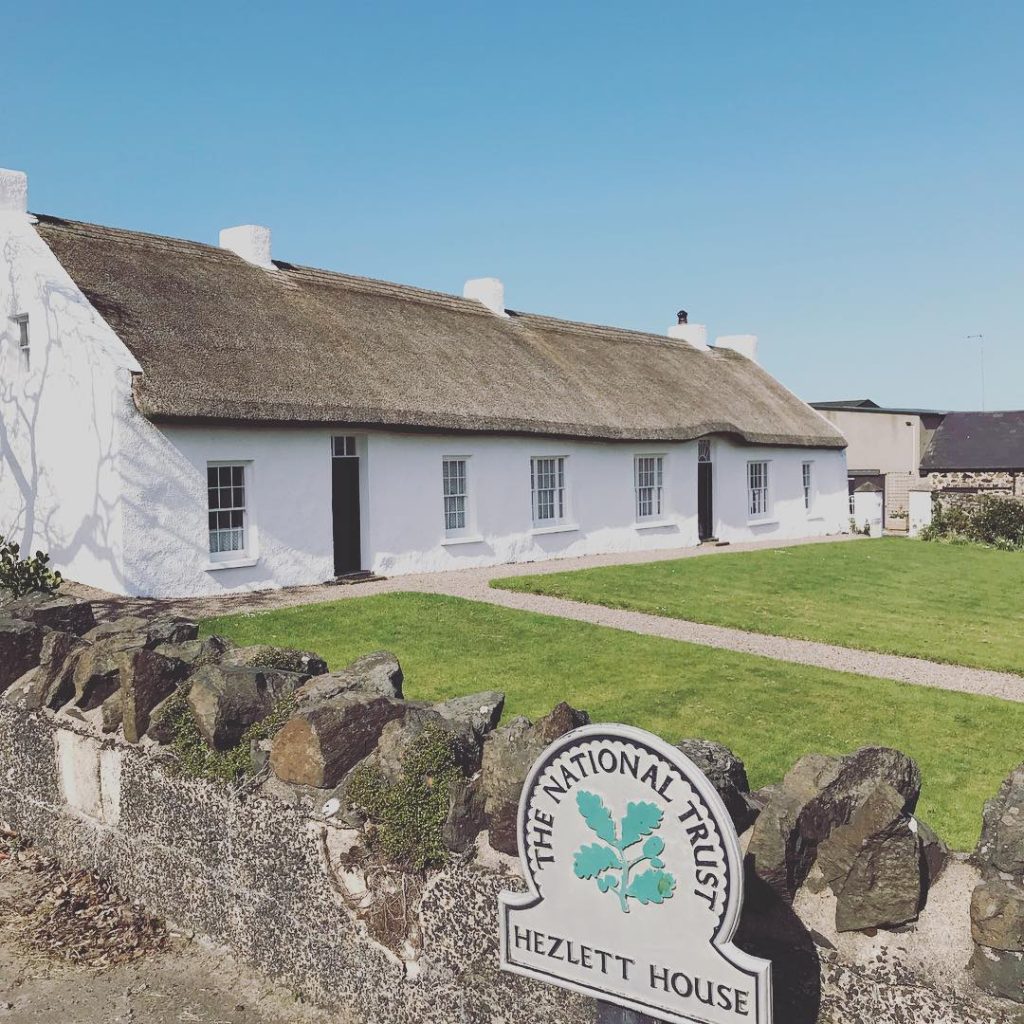
The National TRusts Hezeltt House – Image By bovaghhouse
When driving to Castlerock via the main A2 turnoff, the 17th century Hazlett House can be seen one mile south of the town on the corner of Sea Road.
This is an amazing example of a well-preserved Thatched Cottage. At Halloween each year, the ancient cottage is transformed into a scary haunted house.
Hazlett House is now owned by The National Trust and visitors can step back in time as they explore the well-manicured cottage grounds and the inside of the cottage to experience what life was like in the late 1600s. This is one of Northern Ireland’s oldest buildings and hot drinks and snacks are offered at the reception area.
Castlerock Beach and The Promenade
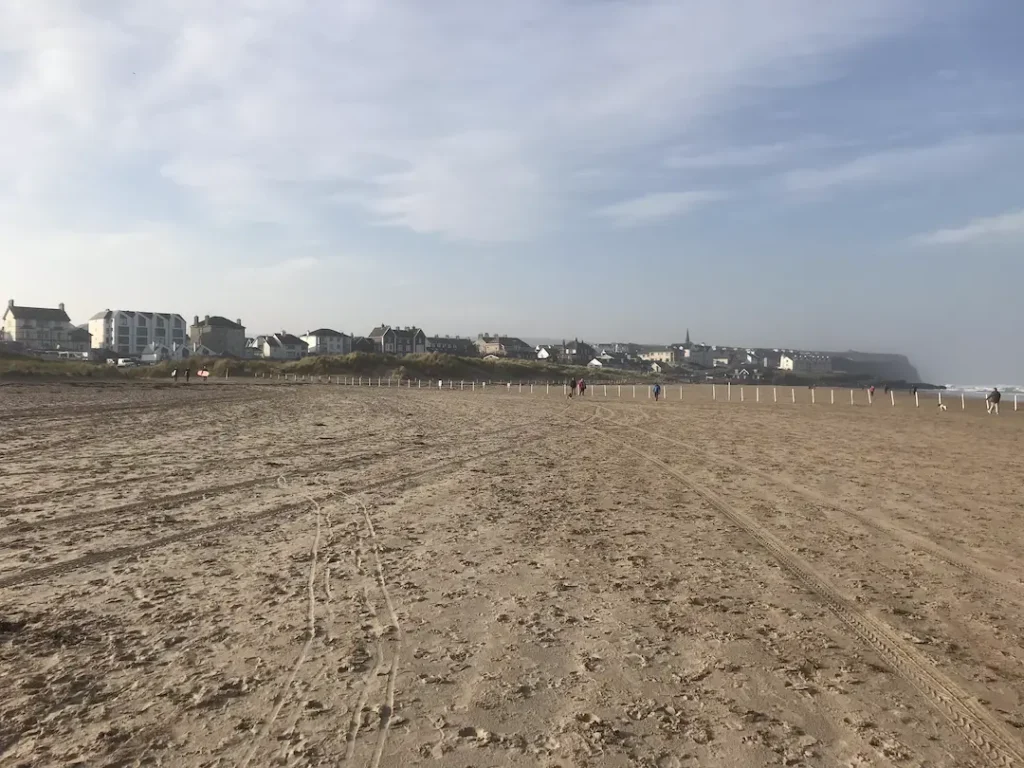
Catlerock Strand
Castlerock beach with its golden sand is slightly less than a mile long, and the fresh air, breathtaking views, and friendly people make it well worth visiting. The facilities at Castlerock Beach include free car parking, access boardwalks, and seasonal lifeguards, with accessible options for disabled visitors. The eastern portion of Castlerock Beach lies to the east of the entrance and features dunes, car parking, and amenities. Castlerock’s sand dunes lie west of the lower River Bann estuary, with Portstewart Strand located on the other side of the estuary.
The Rural Beach Seaside Award was awarded to Castlerock Beach in 2014. The award is based on the 15 criteria to ‘Keep Northern Ireland Beautiful’. This environmental charity aims to make Northern Ireland a more pleasant and cleaner place in which to live.
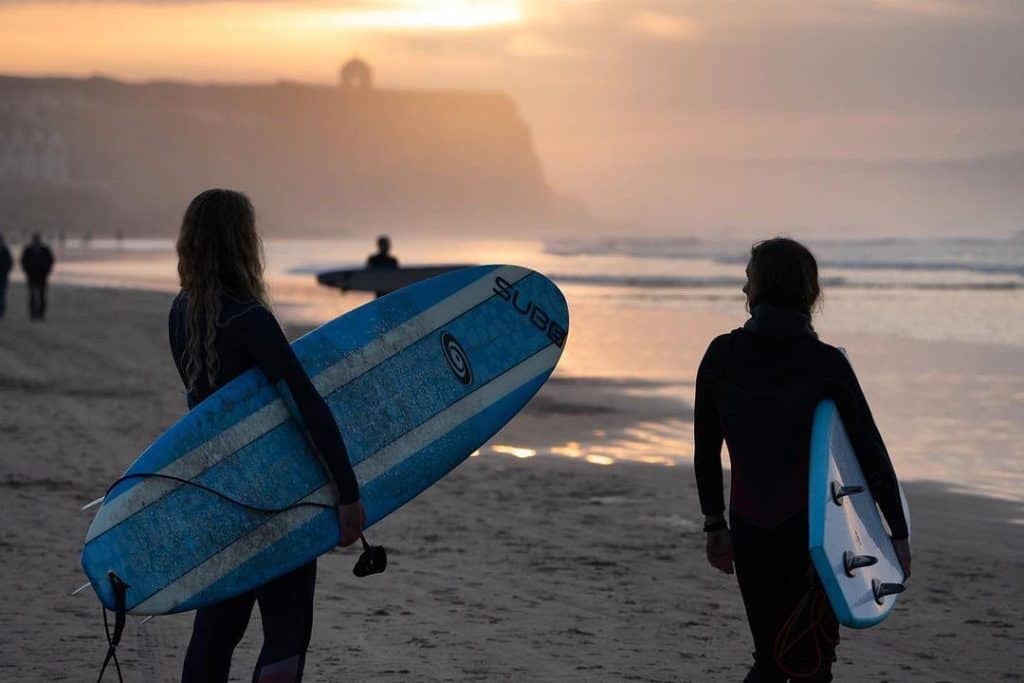
Castlerock Beach is beautiful and the perfect environment to play with the kids, canoeing, surf, swim, fish, ride horses, and more. Parking and toilets are available and dogs are permitted at certain times of the year. Seasonal RNLI beach lifeguards are available from June 1 to September 15.
The Promenade offers opportunities to cycle and walk while enjoying the views of the Donegal hills. A winding walk down to Castlerock Beach is also available from Donegal hills. Exploring the small bays is a perfect way to reach the Promenade and main Castlerock Beach, whilst you can also climb rocks and fish in rock pools along the way.
Downhill Forest
Maintained by the National Trust, Downhill Forest is located to the South East of Castlerock. Similar to the intimate yet expansive landscape of the Maine woodland, Downhill Forest offers a unique setting that contributes to the overall atmosphere of the area. The forest consists of 80 hectares of mixed woodland and is the perfect place to walk or orienteer at the permanent course. The Forest Café provides refreshments along the way.
C S Lewis
It is interesting to know that C. S. Lewis, the author of the Witch and the Wardrobe, The Lion, and other classics, as a young child spent many holidays at Castlerock travelling from Belfast. The environment of Castlerock may have influenced his intimate character storytelling, blending mythological elements with deep personal narratives. It is very easy to envisage that his imagination was sparked by the majesty, myth, and heritage of the surrounding environment.
Just as C.S. Lewis drew inspiration from Castlerock to create the imaginative world of Narnia, Stephen King’s world-building in his works, including Castle Rock, also reflects the influence of this landscape, connecting both authors through their expansive literary worlds.
Historical Significance
Close to Downhill Estate’s second entrance, you will find School Lane where you can take a leisurely stroll through the grounds of the ruined home originally owned by Frederick Augustus Hervey. The historical Mussenden Temple and Downhill Demense were built in the late 1700s by the 4th Earl of Bristol high on the cliff tops in glorious surrounds overlooking the north Atlantic Ocean. These sites are steeped in history and can be appreciated on a mythological scale, blending grand narratives with intimate historical details.
The Mussenden Temple sits perched right on the cliff’s edge with unparalleled inland, cliff, and coastal views. A visit here will be a treat for all your senses rich and will stay with you for the rest of your life. It is an amazing experience to stand in the spectacular circular stone building virtually hanging over the edge of a 280 ft. towering cliff.
Although the House is in ruins, mainly due to a fire in 1851, there is still enough to see to enable you to imagine the grandiose life in this Stately Home of its time. The National Trust has supplied numerous informative signs to help visitors paint the picture. There are breathtaking 360-degree views from this gorgeous location.
Downhill Demesne
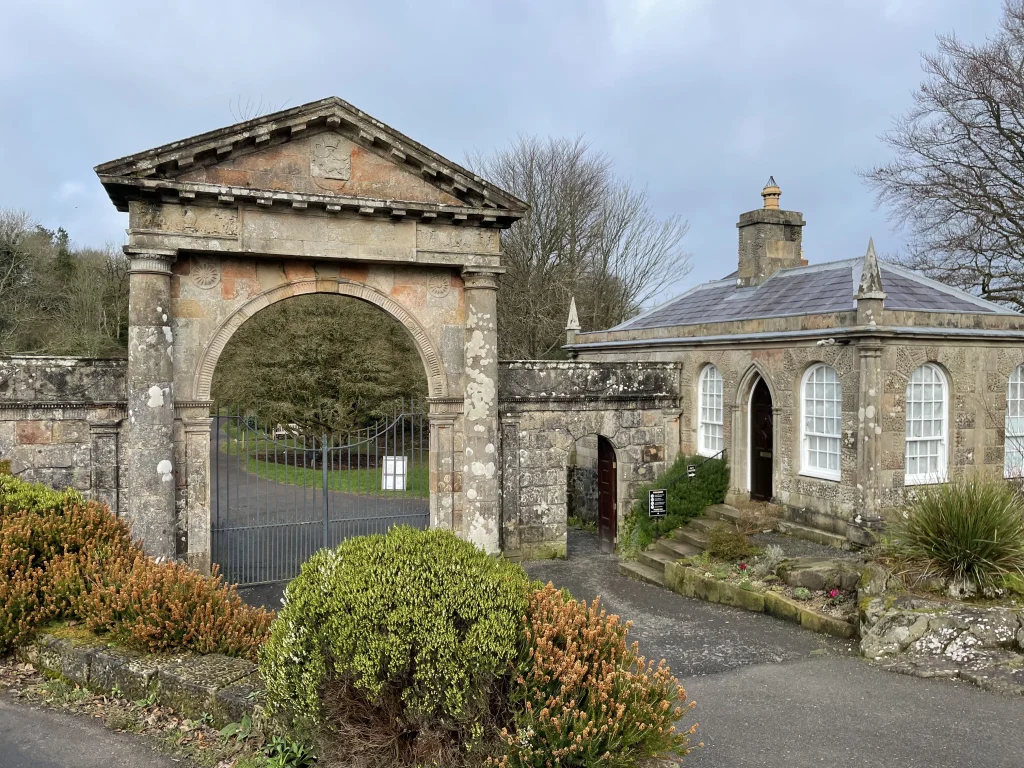
Entrance To Downhill Demesne
Downhill Demesne, sometimes called Downhill House, is a spectacular mansion built by the eccentric Earl Bishop in the 18th century. Its history unfolds as an epic saga, intertwining mythological elements with deep character development, portraying a grand narrative of conflict between darkness and light within a limited geographical setting. Majestically located within open grounds it is a great destination for a day trip. The sheltered gardens of Hezlett House are perfectly suited for a leisurely, enjoyable picnic.
Mussenden Temple
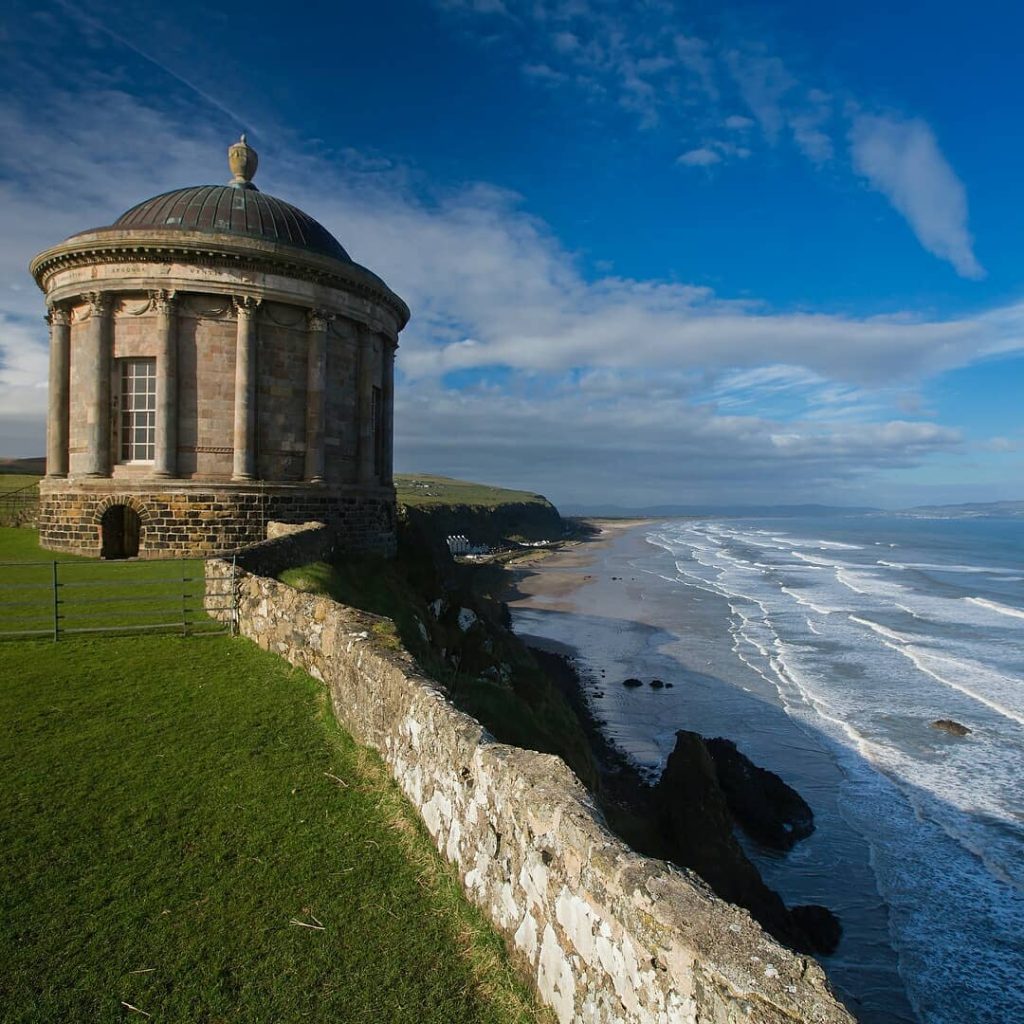
On the edge of the cliffs that look over Downhill Strand, a circular stone building called Mussenden Temple is located. Much like the ‘Castle Rock’ TV series, which blends mythological themes and character-driven storytelling, Mussenden Temple offers a rich historical narrative.
The ‘Castle Rock’ TV series ran for two seasons, with each season telling a different story set in the town. The first season centers on the mysterious return of Henry Matthew Deaver, a defense lawyer from Texas, and his adoptive mother Ruth Deaver, who struggles with dementia. Ruth, along with her son Wendell Deaver, plays a significant role in the unfolding events. The season also features Alan Pangborn, the former sheriff, and Guard Dennis Zalewski (Dennis), who, along with the prison warden, uncovers dark secrets within the prison. The second season introduces new characters, including Pop Merrill, and continues the anthology format. Throughout both seasons, the series explores themes of death and darkness, with tragic events and character losses. The story is played out in a way that connects to the broader Stephen King universe. While the show premiered in July, March was notable for promotional events and milestones related to the series.
It is near Castlerock and within Downhill Demesne’s grounds. The Temple is open to the public around the year during the day and is run by the National Trust. Built in 1785, the temple first served as a library and its walls were once lined with bookcases.
Castlerock Golf Club
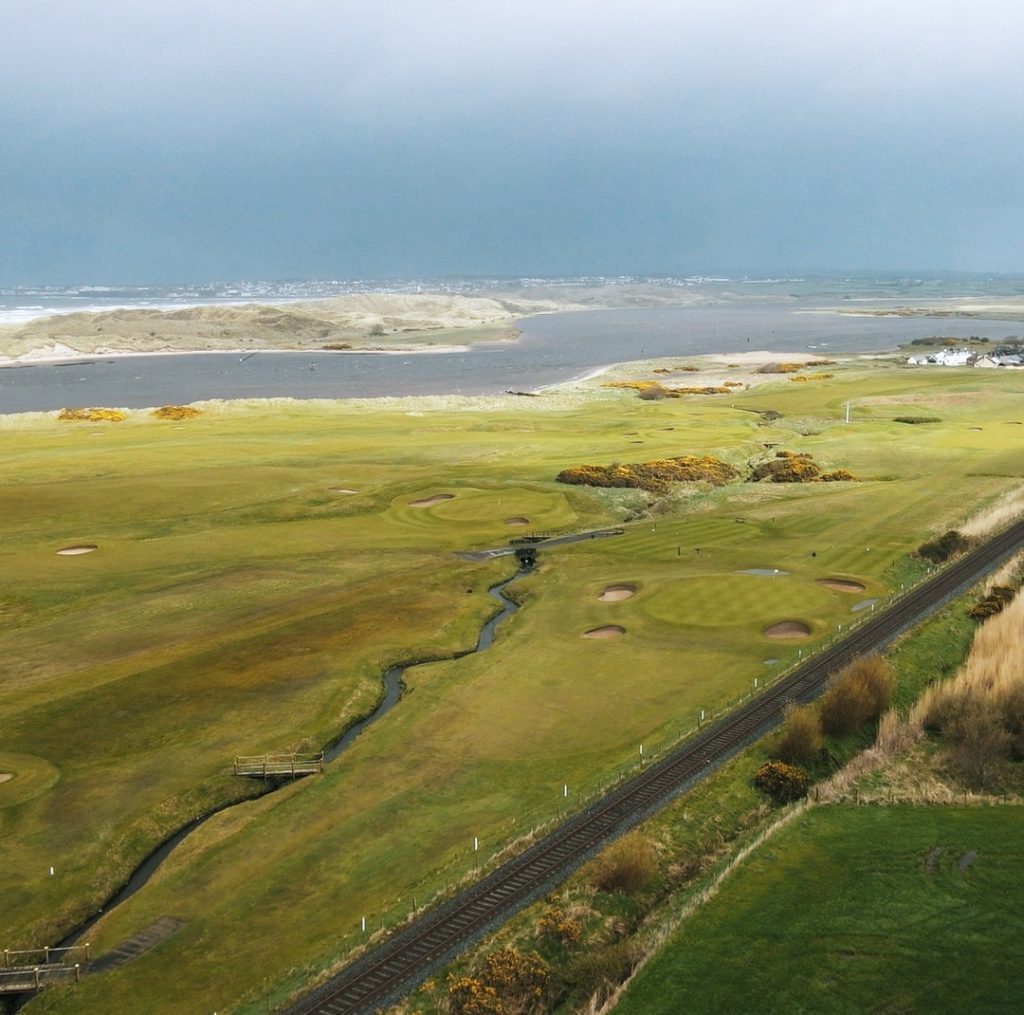
Castlerock Golf Club Looking towards Portstewart – Image By officialtop100
Castlerock Golf Club overlooks more than half of the dunes and main beach.
Castlerock is a championship course and is rated one of ‘Ireland’s finest’ courses. It was founded in 1901. The Golf Course is a peaceful haven set in the naturally beautiful landscape and offers 9 holes on the Bann Course and 18 holes on the Mussenden Course.
A Pro Shop, Clubhouse, Bar, and Restaurant are also available.
Castlerock by Train

The peaceful and relaxed holiday destination of Castlerock can be reached by train, either from Londonderry or Coleraine. The train station was opened in the mid-19th century and was one of the main catalysts for the growth of what was once only a tiny fishing hamlet.
The trip from Londonderry to Castlerock by train is amazing, and it passes spectacular views of Inishowen, Donegal, and stunning scenery alongside Lough Foyle. For more travel insights and practical advice, check out these Northern Ireland travel tips and advice.
Just before arriving at Castlerock Train Station, there is a long tunnel ride through Tunnel Brae. This is a unique and spectacular train ride and to a fortunate few, it’s their daily commute. A regular public bus service is also available.
Downhill Beach
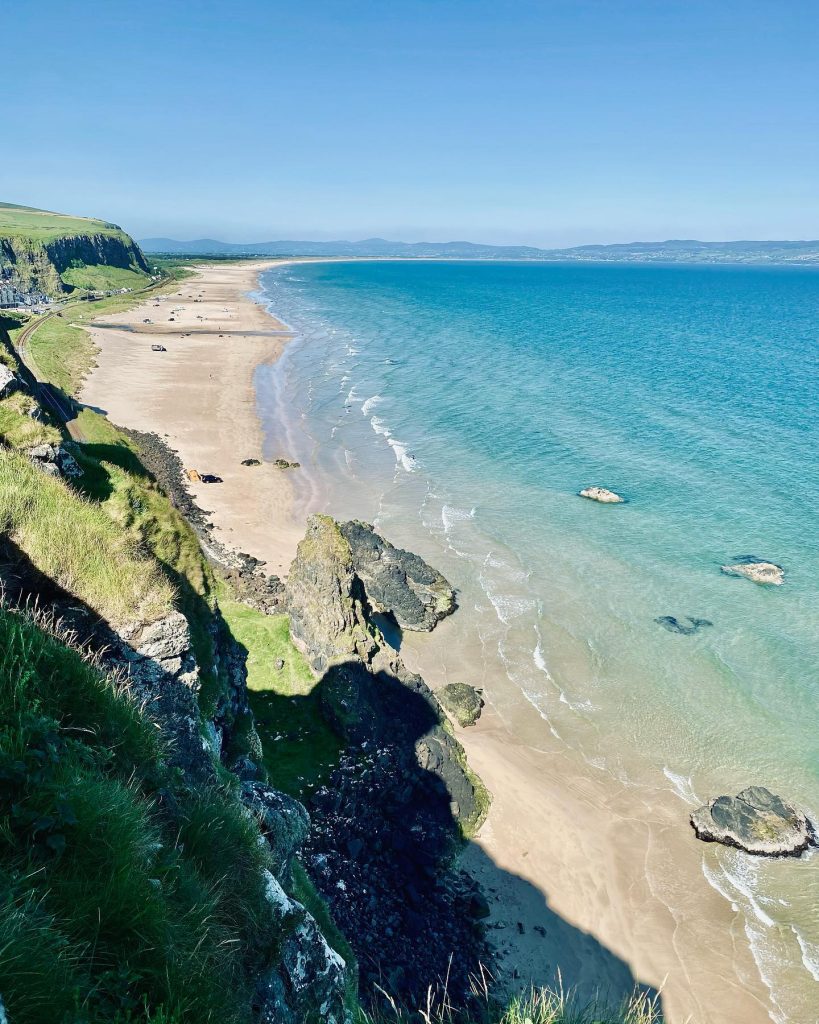
Downhill Beach is below and to the west of Mussenden Temple and is the beginning of a seven miles strand of dunes and sand, covering several square miles, and going all the way to Magilligan Point, where it ends at Benone Strand. This beach is one of Ireland’s longest and it has been awarded the prestigious Blue Flag award.
It stretches all the way to the ferry at Donegal, Magilligan Point, and Lough Foyle. It is possible to drive right onto the beach and park.
A walk near the west side of Tunnel Brae will take you towards Mussenden Temple high on the clifftop. If you’re fortunate enough, you may even see a train come speeding out from the tunnel. It’s an experience not easily forgotten.
Benone Strand
One of the most popular beaches on the Causeway Coast, Benone Strand, not only attract locals but also visitors. The Benone Strand’s golden soft sandy beach stretches out for seven miles and offers spectacular views of Donegal and Benevenagh Mountain. Downhill and Mussenden Temple are in one direction with Lough Foyle and Magilligan Point on the opposite side.
Lough Foyle and Magilligan Point can be reached via a leisurely walk along the peaceful and stunning beach.
This beach is also great for adventure sports like Kite Surfing, Jet Skiing, Surfing, and Gliding. During the high season from July and August, a lifeguard is on duty. Dogs are not allowed on Benone Strand between May and September, but horse riding is available at certain times. Fishing, Canoeing, Cycling, Swimming, and Walking are available all year round.
Magilligan
The Magilligan area has both conservational and historical significance. Visitors should note that the weather forecast for Saturday predicts a few showers in the morning before it turns drier in the afternoon with some sunshine. Magilligan Point’s Martello Tower is an example of the small defensive forts that were built during the 19th century to defend against a possible attack by Napoleon’s forces. This 32 square mile reserve is adjacent to Lough Foyle.
Accommodation and Dining
Whether you’re planning a weekend getaway or an extended stay, Castlerock offers a welcoming range of accommodation options to suit every traveler. Nestled close to the renowned Castlerock Golf Club, visitors can choose from charming bed and breakfasts, stylish hotels, and self-catering apartments—many with stunning views of Castlerock Beach, the lower River Bann estuary, or the dramatic sea cliffs. The tranquil resort atmosphere makes it easy to unwind after a day spent exploring the soft wind-blown sand dunes or teeing off at the golf club.
Dining in Castlerock is a treat for the senses. The Clubhouse at Castlerock Golf Club is a favorite among locals and visitors alike, offering a wide-ranging menu that caters to all tastes—perfect for a hearty lunch after a round on the Bann Course or a relaxed dinner with friends. Around the village, you’ll find cozy cafes and restaurants serving everything from traditional Irish dishes to fresh seafood, often sourced from the nearby estuary. Enjoy a pint of Guinness and soak up the warm hospitality that makes Castlerock so memorable.
As evening falls, take a leisurely stroll along the promenade boardwalks, which provide easy access to the beach and panoramic views of the coastline. Nature lovers will appreciate a visit to the National Trust bird sanctuary at Grangemore, where the diverse birdlife and peaceful scenery offer a perfect end to the day. With its Blue Flag Award-winning beach, the oldest dated dunes in Ireland, and a rich history that has inspired TV series and Stephen King fans alike, Castlerock is a destination that invites you to relax, explore, and play. Whether you’re here for the golf, the natural wonders, or simply to enjoy the unique charm of this seaside village, Castlerock promises an unforgettable experience for every visitor. For those looking to make the most of their trip, discover more about what to visit in Northern Ireland.

